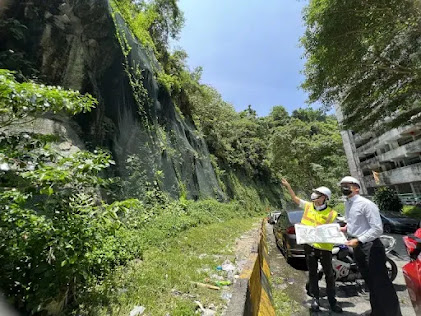Image by https://malaysiagazette.com/
As a geotechnical engineer, determining the correct factor of safety (FoS) for a rock slope is essential for ensuring its stability. FoS is a measure of the slope's resistance to forces acting upon it and is calculated by comparing the slope's resistance to forces acting upon it. When designing and evaluating rock slopes, geotechnical engineers take into account a number of factors, including the geology and geomorphology of the slope, the properties of the rock mass, and the potential for degradation and erosion.
Therefore, engineers frequently collaborate with geologists to produce a more accurate representation of the slope by combining their knowledge and judgement. The strength and deformation properties of the rock mass have a significant effect on the FoS of a rock slope. These two parameters have a substantial effect on the FoS. There are a number of methods for determining these properties, including laboratory testing and in-situ testing, which can be accomplished through borehole surveys.
By comprehending the rock mass's strength and deformation properties, engineers can classify the rock mass and estimate its stability. Important considerations also include the presence of discontinuities, such as joints and bedding planes, which can weaken the rock mass and increase the risk of failure. Significant factors in determining the FoS of a rock slope are the orientation, spacing, and persistence of these discontinuities. Additionally, over time, weathering and erosion can weaken the granite mass and increase the likelihood of failure. Using field observations and monitoring, geotechnical engineers determine the rate of deterioration and the likelihood of failure based on the effects of weathering and erosion.
On a final note, human activities, such as mining, construction, and land use changes, can affect the stability of a rock slope. Engineers may employ aerial photographs, maps, and other data sources to evaluate the potential impact of these activities and determine how they may affect the slope's stability.
M. Azmir Abdul Mutalib

Comments
Post a Comment